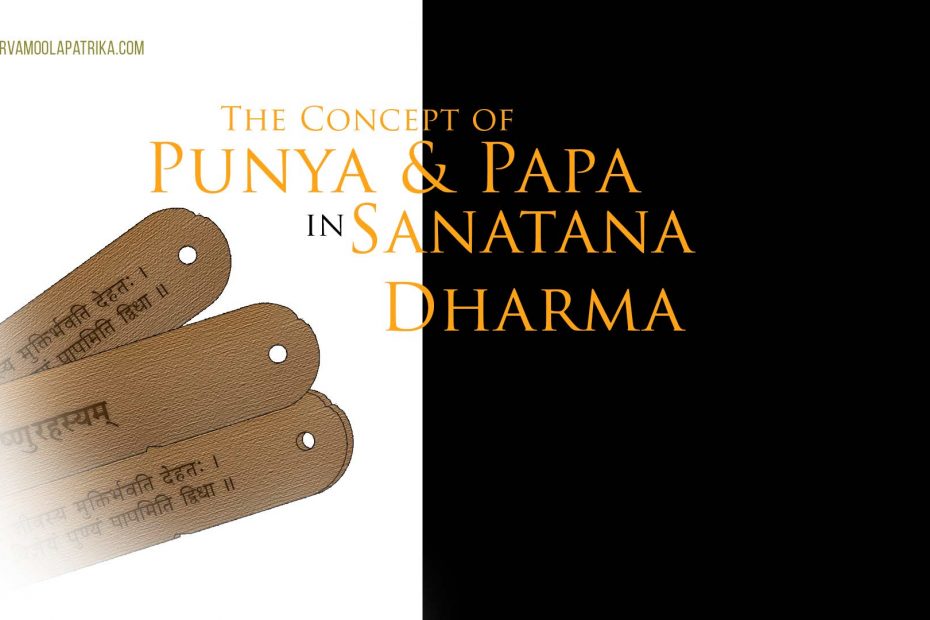Three types of karmas
मानसं वाचिकं चैव कायिकं चेति भेदतः ….
puNya and pApa karma are categorized into three types – mAnasa, vAchika and kAyika. Those activities which happen only in our mind are mAnasika. Our words and speech constitute vAchika. Our physical actions lead to kAyika karma.
All thoughts that are devoid of ego, attachment and other distortions, firm belief in paramAtma and in dharma, lack of desire in anything forbidden by shAstras, bhakti towards sri hari, dhyana, the quality of forgiveness, contemplation of shAstras – all of these constitute mAnasa puNyas.
Giving discourses on shAstras, the study of the vedas and smritis, mantra japa, speaking truth, speaking pleasantly, silence – these come under vAchika puNya.
Performing nitya, naimittika and kAmya karmas that are ordained in the shAstras and other activities which have been hailed in them constitute kAyika puNya karmas. The main activities under this are the service and worship of dEvatas, brAhmanas, gurus, cows and other noble human beings.
pApas too have a similar three-fold classification. Ego, attachment, cheating, greed, atheism, jealousy, hatred, desire to obtain other women, foolishness and other such feelings of the mind constitute mAnasika pApas.
Giving up the study and chanting of vEdas, giving bad news, complaining, speaking curtly, lying and other similar things come under vAchika pApas.
Giving up nitya, naimittika and kAmya karmas even when physically fit, and performing those activities which are forbidden by shAstras are known as kAyika pApas.
The three fruits of puNya and pApa
In the above section, we looked at the three types of karmas that can lead to puNya and pApa. When any such karma is performed, the puNya or pApa that accumulates gives two results at the time of fructification:
a) Sukha or dukha – that is happiness or sorrow that an individual experiences as a part of enjoyment (or suffering)
b) Accumulation of further puNya or pApa.
What the second point above means is that puNya or pApa in turn generates further karmas which in turn lead to more puNya or pApa. Thus a puNya or pApa karma can act as a bija or seed for further karma. Both puNya or pApa can be classified into three types based on this:
a) sAtvika– this type of karma carries a sAtvika bija. It leads to future puNya.
b) rAjasika – this type of karma is nirbIja. It does not contain any seed and leads to no further puNya or pApa. Its only effect is to give joy or sorrow.
c) tAmasika – karma belonging to this category leads to the sowing of a pApa bija. In other words, it leads to more pApa karma in the future.
sAtvika puNya is accumulated when one performs activities from wealth earned through dharma and is performed at the right time and place as declared by shAstras. Such puNya leads to attainment of swarga. When most of such sAtvika puNya is exhausted, a jIva exits swarga and is reborn on earth to perform more sAtvika karma. Eventually such a soul starts to offer all his karmas to sri hari which leads to the exhaustion of all karmas and the soul attains mukti. Some examples of sAtvika puNya karma are the performances of dAna, enjoying sanctioned pleasures, performing rituals as ordained in the shAstras, performing parOpakAra (altruism) etc.
rAjasa puNya involves the performance of those karmas which are done without any real desire or effort. These are also activities which are performed without interest in doing satkArya or noble work. Another type of activity that comes under this category is when one performs a karma only due to fear of accumulation of pApa if it is left undone. Such puNya gives comforts and joy but does not in any way facilitate further puNya. For e.g. it gives great joy with one’s own wife and children, it provides many vehicles and other forms of entertainment. The jIva enjoys these experiences and spends away the puNya without any residual consequence.
tAmasa puNya is that puNya which gives happiness as the immediate result but leads eventually to accumulation of more pApa. If one performs great many yajnas but with ego, hatred and jealousy in mind, such as the ones performed by duryOdhana in the mahAbhArata, such karmas lead to creation of pApa bija that eventually causes more pApa rather than puNya. For e.g. such pApa-bija puNya gives the company of prostitutes or the opportunity to earn great wealth by stealing. Even though such activities give great pleasure when experienced, they go against shAstra and trigger the accumulation of lot of pApa.

Pingback: The concept of Papa and Punya in Sanatana Dharma 3/3 – Sarvamoolapatrika